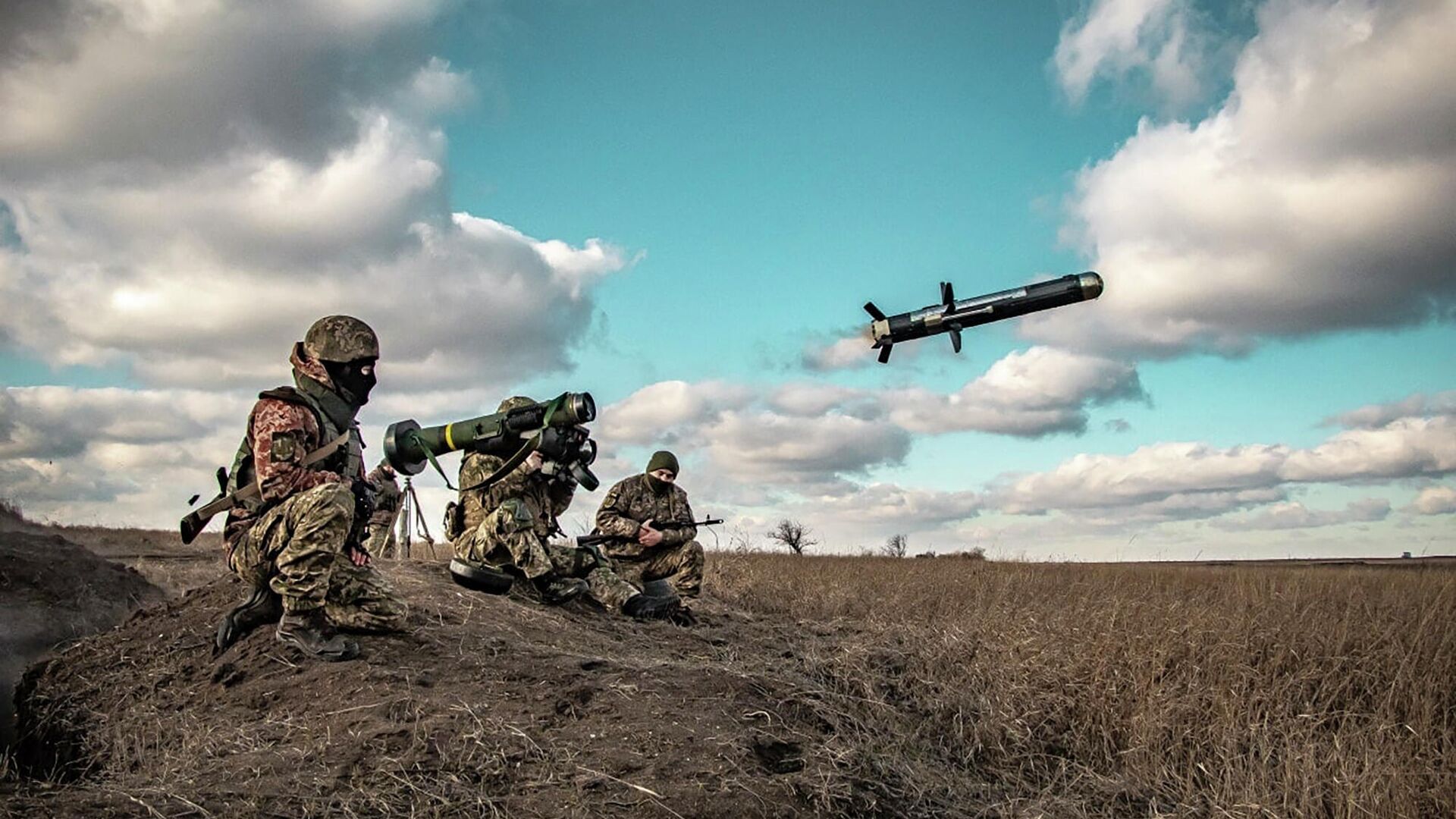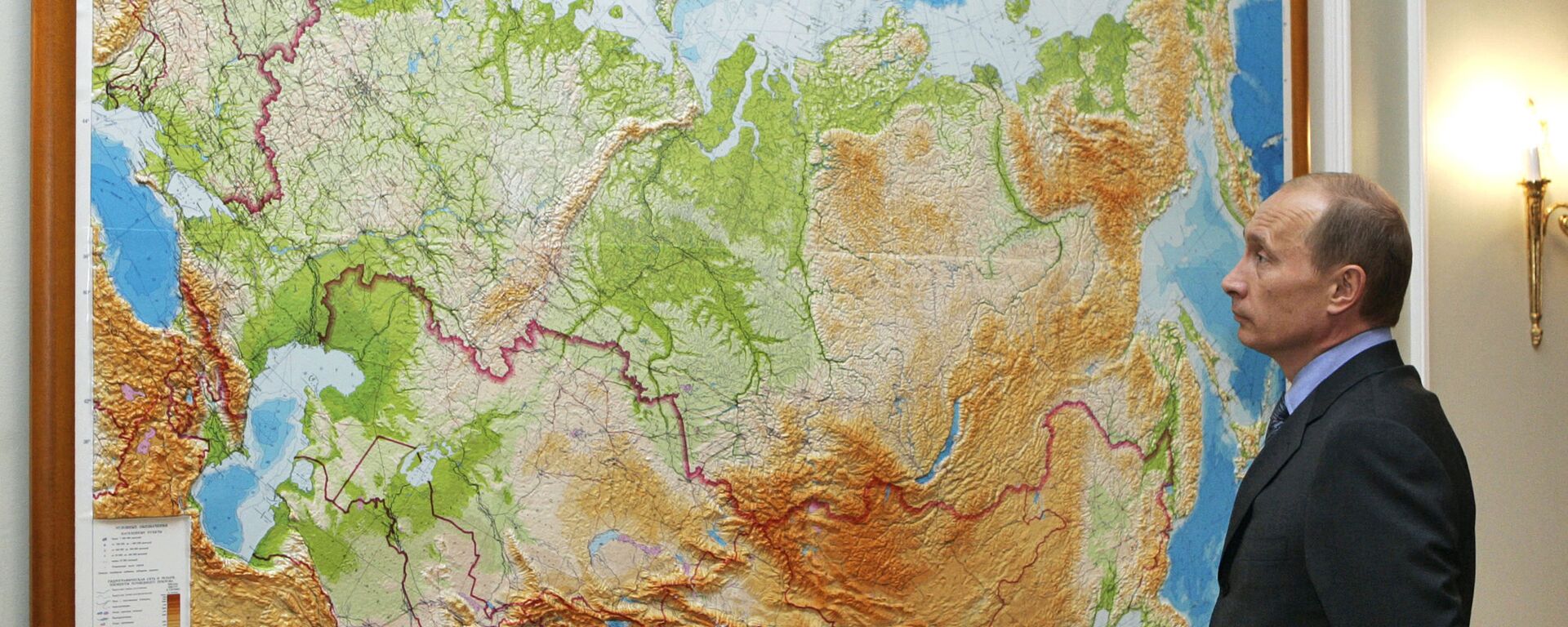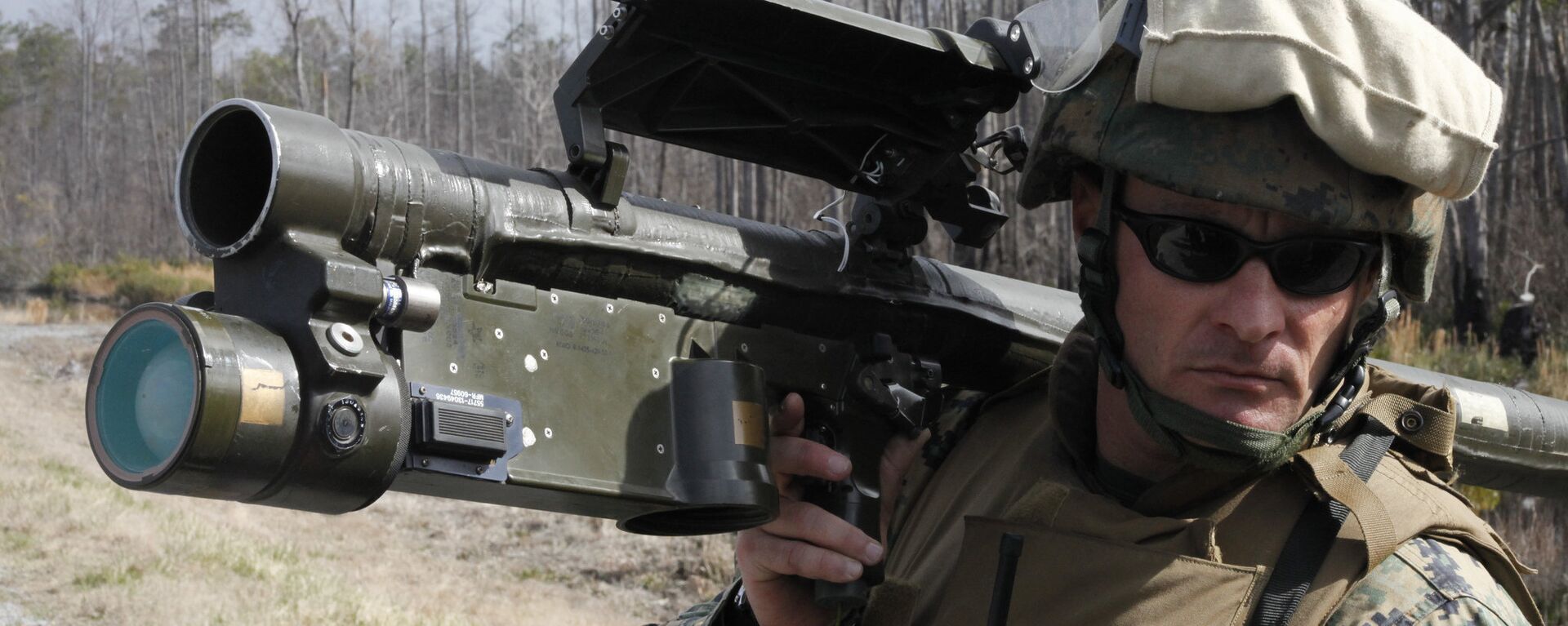US Will Provide Ukraine With Even More 'Defensive Material' if Situation Escalates, State Dept Says
17:01 GMT 18.01.2022 (Updated: 17:50 GMT 18.01.2022)

© AP Photo / Ukrainian Defense Ministry Press Service
Subscribe
Earlier Tuesday, Moscow expressed serious concerns over the "extremely dangerous" statements by officials in the United States and Britain about upping weapons deliveries to the UK to include shoulder-launched anti-aircraft missile systems. Doing so would only increase, not reduce tensions, according to the Kremlin.
The United States will provide Ukraine with additional "defensive material" on top of that already scheduled for delivery if the situation escalates into a Russian invasion, a senior State Department official has said.
"As you know, we've given more security assistance to Ukraine in the last year than at any point since 2014, and I can assure you those deliveries are ongoing and more are scheduled in the coming weeks. Should Russia further invade Ukraine, we will provide additional defensive material to the Ukrainians above and beyond that which we are already in the process of providing," the official said in a telephone briefing Tuesday.
The official's commentary follows on the heels of a warning by a bipartisan group of US lawmakers visiting Kiev on Monday that Washington might send more Javelin anti-tank launchers, small arms, boats, and possibly even Stinger portable anti-aircraft systems to Ukraine in the event of a Russian "invasion."
"We will impose crippling economic sanctions, but more important we will give the people of Ukraine the arms, lethal arms they need to defend their lives and livelihoods," Senator Richard Blumenthal, one of the senators in the US delegation, said.
Also Monday, UK defence chief Ben Wallace announced that Britain is providing Ukraine with additional "light armour defensive" weapons and sending a small number of troops to the country to teach the Ukrainians how to use them. Wallace stopped short of declaring full-fledged support to Kiev, however, saying that "Russia has the biggest armed forces in Europe" and that Ukraine "is not a member of NATO." Britain, he said, will not unilaterally go into the Eastern European country, and will instead limit its efforts in "helping Ukraine help themselves."
On Tuesday, Kremlin spokesman Dmitri Peskov called the statements being made by US and British officials "extremely dangerous," warning that the weapons being talked about were not only defensive, but potentially offensive, and that the Man-Portable Air Defence Systems (MANPADS) in particular were a category of weapons regulated by international law.
The United States alone has delivered over $2.5 billion in military aid to Ukraine since 2014, with about $400 million of that sent by the Biden administration in the past year. The Obama administration limited its deliveries to 'non-lethal' items including unarmed Humvees, radar equipment and combat gear for troops, but the Trump and Biden White Houses have not shied away from lethal weapons, including Javelin anti-tank weapons, sniper rifles, and artillery support systems. America's NATO allies have further complemented the range of equipment being sent to Kiev, with Turkey providing Bayraktar drones and Czechia sending 152mm howitzers. The UK, Italy and Germany have provided armoured command centers, engineering vehicles and medevac trucks.
Ukraine slipped into a foreign-backed political, economic and military crisis in 2014, when the US and the European Union assisted a push by pro-Western politicians backed by ultra-nationalist militias to carry out a coup against the country's unpopular but democratically elected government. The coup prompted Crimean authorities to organize a referendum to break off from Ukraine and rejoin Russia, while autonomy and independence-seeking separatists in the country's east took up arms in opposition to the new authorities in Kiev. Kiev sent troops to try to crush the separatist, sparking a bloody civil war which has killed tens of thousands and displaced over 2.5 million people.

U.S. Assistant Secretary for European and Eurasian Affairs Victoria Nuland and Ambassador to Ukraine Geoffrey Pyatt, offering cookies and (behind the scenes) political advice to Ukraine's Maidan activists and their leaders.
© AP Photo / Andrew Kravchenko, Pool
The US and its European allies blamed Moscow for the crisis, slapping the country with multiple rounds of sanctions and beefing up troop numbers and drills on NATO's eastern flank. Russia has shot back with restrictions on the import of a variety of Western food products, and has handed out Russian passports to hundreds of thousands of Donbass residents as an assurance of security in case Kiev attempts to resolve the Donbass conflict by force.
In recent months, Western officials and media have accused Russia of staging a troop buildup of "up to 100,000 troops" on Ukraine's borders in alleged preparations for an invasion. Moscow has repeatedly dismissed these allegations, and charged NATO with trying to divert attention from the bloc's own military buildup in the region, including attempts to incorporate Ukraine into the alliance.
Moscow has watched NATO push over 1,200 km eastward since the collapse of the Soviet Union, despite assurances to Soviet leader Mikhail Gorbachev in 1990 that the alliance would not move "one inch" east of the former East Germany after its annexation by the Federal Republic. President Vladimir Putin, Foreign Minister Sergei Lavrov and other Russian officials have said repeatedly that Ukraine's membership in the Western bloc would be unacceptable to Russia from a security standpoint, particularly amid the threat of the US stationing offensive missiles in the country which would have a flight time to Moscow of just 5-7 minutes in the event of war.

26 December 2021, 12:01 GMT

